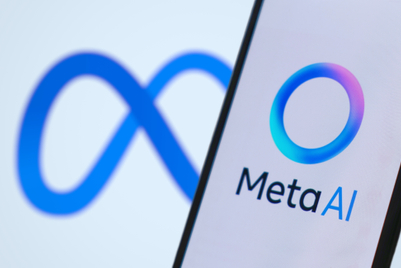.png&h=570&w=855&q=100&v=20250320&c=1)
Microsoft Advertising underwent significant restructuring in March 2024 and is now part of a new division called Microsoft AI, marking a pivotal integration of AI across all company operations, not just in advertising but throughout Microsoft.
Microsoft has positioned itself at the forefront of generative AI through a substantial investment in OpenAI, the creators of ChatGPT, which enables the creation of realistic text, images, or audio based on brief typed prompts. The new division is focused on advancing Copilot and its other consumer AI products and research.
Despite being second to Google in search, Microsoft’s advertising division continues to expand its omnichannel media solutions, building on initial efforts to move beyond its traditional image as a search provider. For example, Microsoft owns properties like LinkedIn, Xbox, and the newly acquired Activision Blizzard. Its Edge browser holds about 70% of global PC operating shares.
Microsoft has also expanded its programmatic capabilities in recent years by acquiring ad tech platform Xandr and e-commerce platform PromoteIQ to boost its retail media presence. These acquisitions enable Microsoft to support the entire advertising funnel to drive conversions and performance through its advertising options, including video, display, native, and search ads.
Through Xandr, Microsoft offers Netflix and other streaming services like Disney and Paramount a demand-side and supply-side platform to sell ads.
Ahead of the upcoming Campaign360 event, Campaign speaks to Nick Seckold (pictured above), the regional vice president for Asia Pacific at Microsoft Advertising, about how the company has evolved from one of the original Internet portals with MSN in the mid-to-late '90s to an advertising leader.
How Microsoft Advertising is responding to changing consumer behaviours
Being integrated into Microsoft AI means that AI technology underpins all of MA’s products and services.
For advertisers using the Microsoft Advertising platform, this integration brings an AI copilot to every aspect of campaign management. This AI copilot is available to all advertisers, big or small, and enhances the ability to create, optimise, and gain campaign insights.
Previously, setting up any advertising campaign involved manual work—from uploading creative content to tagging and creating titles. Now, generative AI allows those managing accounts to automate these tasks.
For example, advertisers can instruct the AI to set up a search campaign for a specific audience demographic, budget, and marketing goal, and the AI will execute these tasks. Afterwards, the campaign can still be curated and tweaked manually, providing flexibility without the labour-intensive setup that was previously required.
|
|
Seckold explains that generative AI has transformed how the industry interacts with AI by automating many manual tasks and bringing efficiency and practicality to the forefront. This change benefits advertisers in setting up, optimising, and measuring campaigns and enhances consumer interactions with Microsoft Advertising’s products.
“For consumers, using Bing for searches now includes an Copilot feature. Beyond traditional search results, a new chat feature is powered by generative AI. This can be used for complex tasks like planning a travel itinerary,” says Seckold.
“For example, if you're planning a trip to the Greek islands, you can input your preferences for food and accommodations, and the AI will generate a personalised itinerary. This tool helps users access their desired information faster and more efficiently, reducing the need to compile details manually.”
The challenges and opportunities of integrating AI
The biggest challenge with AI is understanding its limitations, according to Seckold, which is why Microsoft refers to AI as a 'copilot' because, ultimately, it is not in control; the human user is.
Seckold explains how AI functions by responding to the prompts provided, which means its effectiveness largely depends on how it is used. The challenge lies in using it constructively, not detrimentally, to add real value.
Prompt engineering, or learning to communicate effectively with AI, is becoming crucial. The questions people ask AI are vital because they determine its actions. While this might seem straightforward, it is often more complex than it appears.
“Some emerging businesses specialise in prompt engineering consulting in response to this need. Internally, we are also developing templated prompts for everyday tasks,” says Seckold.
“For example, if you need to write a performance review for a team member, we provide specific questions to guide the AI. Similarly, we have templates that initiate the drafting process if you're drafting an award entry, focusing on categories like innovation, revenue performance, and marketing impact. The AI can generate a base document, which you can then enhance with specific statistics and details, saving time and streamlining the content creation process.”
Seckold notes people are creatures of habit, especially in the advertising world. For example, despite the availability of advanced tools, many still prefer using Excel because they are accustomed to it. If a method isn't broken, there’s often resistance to change.
One of the challenges Microsoft Advertising faces is getting people comfortable with new technologies, reassuring them that these innovations are not designed to take their jobs but to automate mundane tasks, allowing them more time for other work.
“Our vision for Copilot, integrated across all Microsoft products like Windows, Excel, and PowerPoint, is to assist users in more efficiently managing their tasks. Many in our industry rely heavily on Excel, which can be cumbersome unless you’re skilled in creating macros,” explains Seckold.
“Instead of laboriously analysing data, you can ask the AI to summarise the data, extract insights from last week’s business performance, and highlight the necessary trends. While the initial output from AI might require verification, it provides a solid starting point that you can refine.”
Seckold continues: “Imagine the efficiency gains from an AI that can analyse campaign results across multiple platforms in seconds rather than the days it typically takes to compile such insights. This could streamline how agencies and marketers present data and insights to clients or internal teams.”
Evolving data-driven marketing
Despite the emergence of generative AI, data-driven marketing remains the same as it always was: You start with the end in mind and work backwards. That core approach still holds if advertisers use data to inform their strategies.
Today's challenge lies in the kind of data being used, how it's acquired, and its sources. For example, the shift away from cookies has pushed brands like Unilever, P&G, and Mondelez, which traditionally haven't collected their data, to start building their first-party data assets. This is crucial because owning this data allows brands to control their destiny more directly.
Many brands have been collecting data inherently due to their business models. For example, UberEats collects extensive data simply through user interactions where people sign up, log in, and order food. In contrast, brands like Unilever or P&G face different challenges as their customer relationships are typically mediated through third parties like retailers.
Seckold explains that a key approach is forming alliances with adtech firms and media agencies to optimise the use of data assets.
The advertising industry frequently refers to entities like Google, Meta and Microsoft as 'walled gardens' because they hold extensive first-party data from billions of users. However, the ability to interoperate among these platforms is restricted, primarily due to privacy laws and concerns.
“It is essential to get comfortable with automation and AI. The proliferation of media touchpoints has made it incredibly challenging for marketers to reach their audience effectively across all platforms, from PCs and mobile phones to streaming services like Netflix and Hulu,” explains Seckold.
“Understanding and targeting a single consumer across these touchpoints requires sophisticated data modelling and AI, without which brands would drown in the volume of data available.”
Balancing creativity and technology in advertising
In the realm of creativity, AI is increasingly being used to enhance creativity. For example, Dentsu Creative has used Copilot to aid ideation in the creative process.
According to Seckold, the agency did not see this as a threat but rather as an enhancement, which is crucial when considering the proliferation of media touchpoints and the need to create a variety of assets.
He explains that marketers who aim to reach their audience across multiple platforms at the correct times face the challenge of generating many ideas and constantly revising their creative strategies.
“Historically, a significant challenge for brands, especially in agency settings, was the cost of producing all these assets. However, the value proposition becomes clear with automated technologies like Copilot that facilitate these tasks,” explains Seckold.
“While using AI to revise existing creative works is expected, using it from the ground up for creation is still emerging. There haven't been many examples yet of brands relying solely on AI for creative messaging without some level of human curation.”
Seckold argues AI is enhancing rather than replacing, so it will take time for the industry to adapt fully. He notes media sectors might embrace AI more quickly than creatives, but some creatives are already leaning in because they see the value AI adds to their processes.
However, he concedes there are others who might be more sceptical and prefer to observe and wait. Ultimately, with the genie out of the bottle, Seckold is confident it is just a matter of time before AI influence becomes widespread.
Seckold strongly believes it will not reach that stage where AI independently creates without human input. He explains it starts with the creative brain forming a prompt, which AI uses to establish a baseline. This baseline then needs refinement and changes, which humans must handle.
“For example, I listened to a podcast featuring Amy Dodds, CEO of the Futures Group. She beautifully explained the concept of AI and prompt engineering. She demonstrated using ChatGPT, similar to Copilot, by creating a business plan to provide industry prompt engineering consultancy services. She input specific prompts, like outlining five key strategies and exploring pricing models,” explains Seckold.
“The result was a detailed business plan draft in just a few minutes, something she could do swiftly due to her expertise. A novice might not achieve the same coherent plan without similar expertise. This illustrates why the creative brain and expert knowledge are crucial to guiding AI effectively. It's why it's referred to as 'Copilot'; it’s your assistant, not the one in control—humans are.”
The road ahead for Microsoft Advertising in APAC
Integrating various businesses within Microsoft involves both external and internal efforts. Externally, the focus is on branding and client interactions, while internally, the priority is to interconnect systems to create a unified access point, streamlining client engagement through a single avenue through MA.
Over the next six to 18 months, Microsoft is expecting significant developments from Microsoft Advertising, particularly in APAC, which represents a critical region for future growth.
Despite conceding to Google in the search engine market, Seckold believes Microsoft has a substantial footprint with Windows and Edge, which are integral to the company’s overall ecosystem.
Microsoft Advertising is also expanding its Connected TV network, offering more choices to advertisers. Netflix, for instance, currently includes advertising only in South Korea, Japan, and Australia, but given its vast audience across APAC, it is likely to expand its programmatic offerings elsewhere in the region.
Seckold explains: “The challenge lies in execution—deciding which projects to prioritise and how to allocate resources effectively. With opportunities in Asia and globally, we need to consider what we can achieve with the resources available and what makes the most strategic sense.”


 Nick Seckold will be speaking at Campaign360 on May 14-15 at the Marina Bay Sands in Singapore.
Nick Seckold will be speaking at Campaign360 on May 14-15 at the Marina Bay Sands in Singapore.
.jpg&h=334&w=500&q=100&v=20250320&c=1)


.jpg&h=334&w=500&q=100&v=20250320&c=1)




+(900+x+600+px)+(3).png&h=334&w=500&q=100&v=20250320&c=1)
+(900+x+600+px)+(3).jpg&h=268&w=401&q=100&v=20250320&c=1)


.jpg&h=268&w=401&q=100&v=20250320&c=1)
.png&h=268&w=401&q=100&v=20250320&c=1)

.jpg&h=268&w=401&q=100&v=20250320&c=1)
